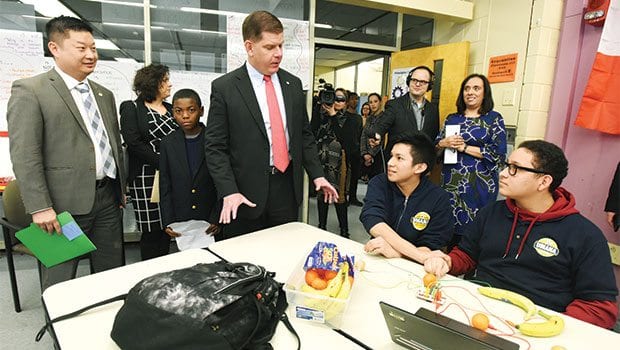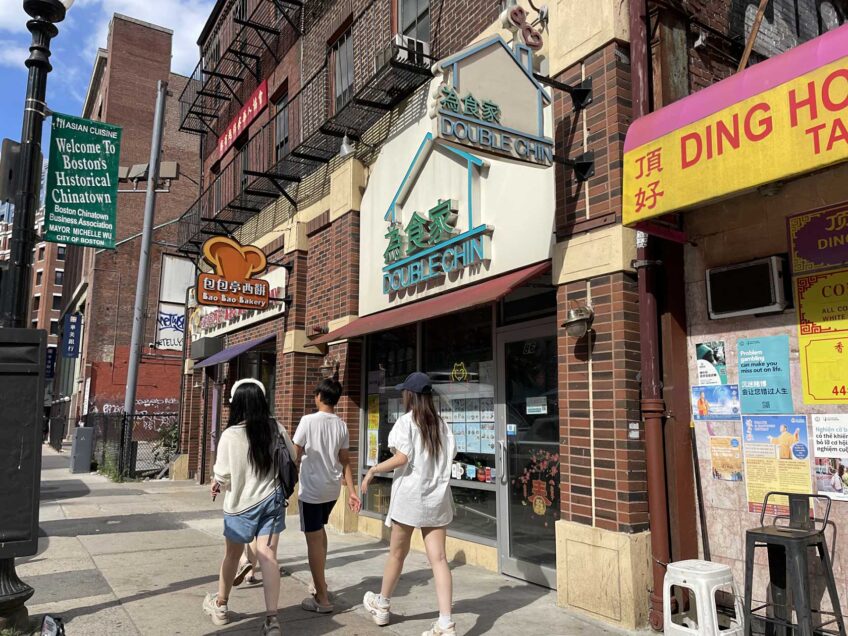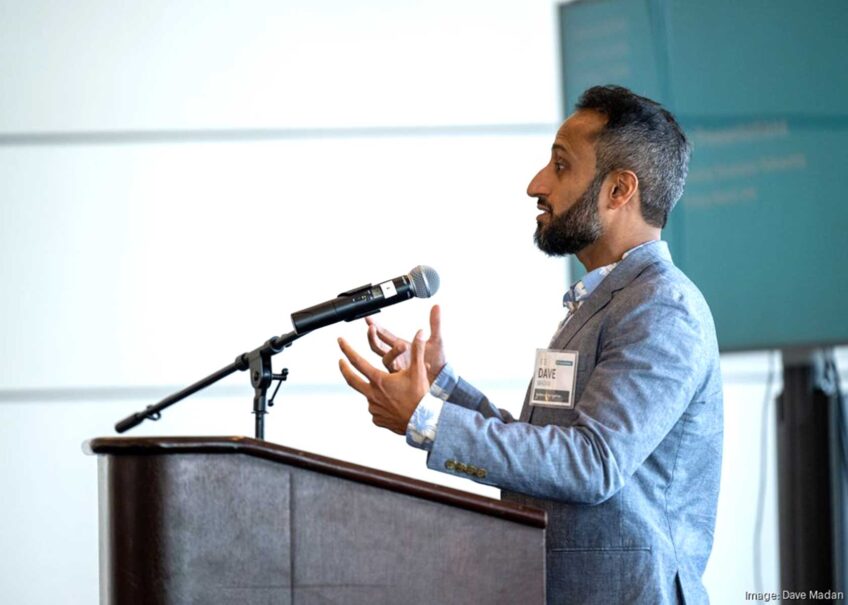City, United Way expanding STEM education program
With $4 million grant, program aims to reach 10,000 BPS students in 5 years

Whether or not Amazon selects Boston for its second headquarters, the city is likely to see an influx of tech jobs, with the online retail giant currently seeking 1 million square feet of office space in the Seaport District and other tech firms leasing space in and around the city.
Boston schools can help meet the growing need for tech sector jobs by promoting science and technology education in the Boston Public Schools, says Mayor Martin Walsh. Last week, Walsh and other city officials visited Mario Umana K-8 Academy in East Boston for a demonstration of BoSTEM, a city-wide initiative aimed at increasing science, technology, engineering and math (STEM) programming in after-school programs for students in grades 6–8.
The U.S. Department of Education awarded the United Way of Massachusetts Bay and Merrimack Valley a $3.9 million grant to expand and evaluate the BoSTEM program, which officials hope will reach 10,000 students over the next five years.
Musical approach
“Boston is at the center of STEM education,” Walsh said addressing reporters at the Umana. “We’re a global leader in science, in medicine, in so many areas. We want to make sure that in our own back yard, we’re growing the next generation of engineers and scientists.”
In one classroom, Juan Maldonado, a program manager with Mission Hill-based Sociedad Latina, helped students build a paper touch-sensitive keyboard, then enlisted Walsh in a demonstration of its use. Linking hands with the students, the mayor touched the conductive-tape keys, arranged on the floor, to generate tones.
“The current is going through your bodies,” he told the students, adding quickly, “and it’s totally safe. I promise you.”
The hands-on project demonstrated the approach to education supported by BoSTEM, which will pair children with industry experts to work on projects.
“This work is project-based,” said BPS Superintendent Tommy Chang. “It’s hands-on. It’s what you will actually do when you are the computer programmers and scientists of tomorrow.”
Chang said that 45 percent of the new jobs in Boston would likely be STEM-related. At the same time, 69 percent of employers cite difficulty filling STEM jobs. The BoSTEM program aims to address that mismatch.
“Not all students have equal access to the hands-on learning that gives students the chance to apply math and science skills in exciting, real world contexts,” said Michael K. Durkin, President and Chief Executive Officer at United Way of Massachusetts Bay and Merrimack Valley. He said BoSTEM’s approach brings together educators, industry and corporate partners, volunteers, government and community-based organizations to help prepare more of Boston’s current middle school students for the workforce opportunities of the future.
Boston students participating in the BoSTEM program learn through an after-school curriculum aligned with lesson plans taught during their regular class hours. In addition, they have access to an online STEM curriculum, titled “Defined STEM.”
United Way will contribute $1 million over five years and has raised additional funds in partnership with IBM, Linde Family Foundation, JetBlue, and the Mass Biotech Council.
Most students currently participating in BoSTEM are considered high-needs students or economically disadvantaged, according to a BPS press release. In addition, 92 percent of the participating students are African American or Latino, who are underrepresented in STEM education and careers.
Boston After School & Beyond will manage the program sites and coordinate professional learning for teachers and program staff, with the help of $1 million received over five years.
Currently, BoSTEM program providers include Breakthrough Greater Boston, Citizen Schools, CitySprouts, Community Boat Building, Latino STEM Alliance, Massachusetts General Hospital, Sociedad Latina and Thompson Island Outward Bound Education Center. Program sites will receive $1.4 million over five years for grade 6-8 STEM programming, and the number of sites is expected to expand from eight to 12 over the course of this grant.
Scaling up
“These additional funds will allow community-based organizations like Sociedad Latina to better prepare students who remain underrepresented in the STEM field,” said Alexandra Oliver-Davila, Boston School Committee member and executive director of Sociedad Latina. She cited the value of hands-on learning experiences in piquing student interest and helping them see themselves as agents of change in their communities.
As part of the national grant, BoSTEM will undergo an independent evaluation over the next five years to ensure the effectiveness of a research-based model that can be scaled beyond Boston. The evaluation will measure interest and aspiration in STEM and STEM careers, growth and improvement in social and emotional learning (SEL) and academic proficiency and achievement in STEM.
More than 1,700 students participated in BoSTEM across 27 program sites during the 2016-2017 school year and summer 2017. In program evaluations so far, 77 percent of all students showed positive gains in “STEM Interest overall” and 80 percent of students showed positive growth across the social and emotional skills of critical thinking, perseverance, and relationships with peers and adults.







